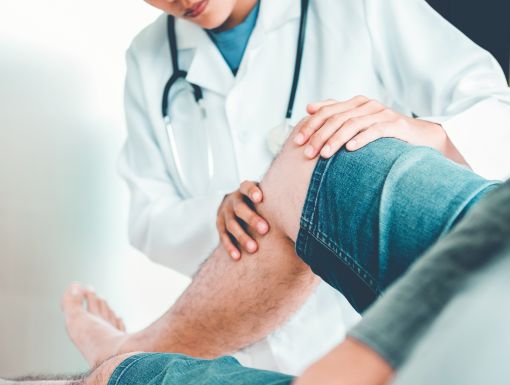
6 of the Best Ways to Keep Your Knees Healthy
The knee is the largest joint in the human body. It plays an integral role in the performance of many of life’s everyday activities. So it’s not surprising that this joint undergoes wear and tear over time.
Though it’s mainly considered a disease of aging, degenerative arthritis of the knee is prevalent in younger people, too. In younger people, arthritis may be related to prior knee trauma, surgery or obesity.
Arthritic knee pain can significantly impact a person’s quality of life regardless of the underlying cause or their age. Here are six simple and effective ways to keep your knees healthy:
Maintain a healthy weight
The knee joint is subjected to considerable biomechanical stress – internal and external forces that put stress on the body.
When walking, the force on our knees is equivalent to three to four times our body weight. These forces increase to seven to 10 times our body weight with activities such as taking the stairs, rising from a chair or squatting.
Losing 10 pounds can reduce the force on the knee by 30 to 40 pounds.
Strengthen your knee muscles
Having strong muscles around the knee, particularly the quadriceps and hamstrings, is important for a well-functioning knee joint. When these large muscle groups are weak that can cause a significant amount of pain.
Simple, intensive stretching and strengthening exercises can greatly reduce pain and slow the progression of knee arthritis.
Here are two exercises you can do to help strengthen the muscles around your knees:
Quadricep set
- Begin in a seated position on the floor. Lean back on your hands with your legs stretched out in front of you.
- Slightly bend your left knee and raise it toward the ceiling. Hold it for about five seconds, then straighten it as much as you can. Squeeze your quadricep as you’re straightening your leg.
- Lower and repeat on the other side.
Straight leg raise
- Begin in a seated position on the floor. Either lean back on your hands or lay flat on your back.
- Put your right leg flat on the floor and bend your left knee. Lift your right leg straight up to meet the top of the bent knee, then slowly bring it back down.
- Repeat the same motion on the opposite leg.
Get off the couch
Regular physical activity is beneficial to your general health and your knee joints.
Low-impact activities and exercise like walking, biking, swimming and yoga are best. This is particularly the case for people with knee arthritis. Recent studies have shown that recreational runners are at lower risk of developing knee arthritis than competitive runners or sedentary people.
Consider adopting a Mediterranean diet
According to the Arthritis Foundation, studies have shown that eating foods commonly part of the Mediterranean diet can help arthritis by curbing inflammation.
The Mediterranean diet is a way of eating based on the traditional cuisine of countries bordering the Mediterranean Sea. It is a versatile diet that is typically high in vegetables, fruits, whole grains, beans, nuts, seeds and olive oil. It is one of the recommended diets in the Dietary Guidelines for Americans and is recognized by the World Health Organization as healthy and sustainable.
The main components of a Mediterranean diet include:
- Daily consumption of vegetables, fruits, whole grains and healthy fats.
- Weekly intake of fish, poultry and eggs.
- Consumption of legumes, nuts and seeds.
- Moderate intake of dairy products.
- Limited intake of red meat.
- Being physically active.
If the shoe fits, wear it
The knee bone is connected to the foot bone. Good support at the foot promotes improved alignment and reduces stress at the knee. Wearing comfortable and appropriate shoes will help protect against or improve arthritic knee symptoms.
Listen to your knee
Clicking and popping sensations are common around the knee. If the popping doesn’t accompany pain or swelling, these symptoms don’t need to be a source of concern.
However, if you experience pain and/or swelling of the knee with or without clicking and popping, you should rest, ice your knee and use anti-inflammatory medication (unless you have medical conditions that prevent you from taking these medicines).
If these knee symptoms last longer than two weeks, see your physician.
Schedule an appointment with orthopedic surgeon Ryan Charles, MD.



